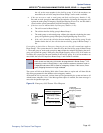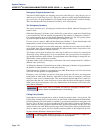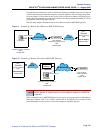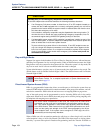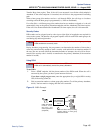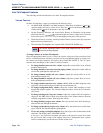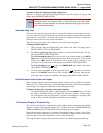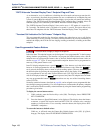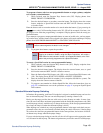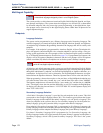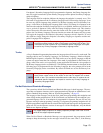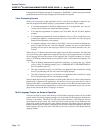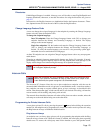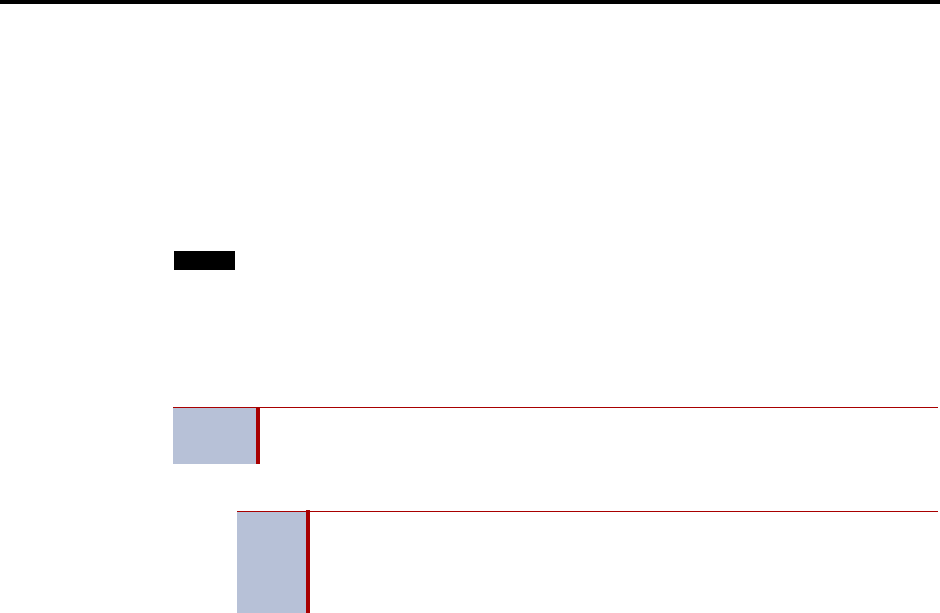
System Features
INTER-TEL
®
CS-5200/5400 ADMINISTRATOR GUIDE, ISSUE 1.1 – August 2005
Standard/Alternate Keymap Switching
Page 169
To program a feature code in a user-programmable button or assign a primary endpoint
to a secondary extension button:
1. While on-hook, enter the Program Keys feature code (397). Display phones show
PRESS THE KEY TO PROGRAM.
2. Press the desired feature or secondary extension button. The display shows the current
feature, endpoint, or Speed Dial location name and KEY VALUE: <feature, extension,
or location code>.
Enter the feature code or extension number to be stored under that button. (If programming the
button, only Call Forwarding feature codes 355–358 will be accepted.) You hear a sin-
gle progress tone when the programming is completed. Display phones show the newly pro-
grammed feature.
If you attempt to program a nonprogrammable button or enter an invalid code, you hear repeat-
ing reorder tones, and the feature code assigned to the button will remain unchanged. Display
phones show NON-PROGRAMMABLE KEY or FEATURE CODE INVALID.
3. To program other buttons, repeat the procedure.
To create a Speed Dial location in a user-programmable button:
1. While on-hook, enter the Program Keys feature code (397). Display endpoints show
PRESS THE KEY TO PROGRAM.
2. Press the desired feature button. The display shows the current feature, user, or speed
dial location name and KEY VALUE: <feature or name>.
3. Enter the Station Speed Dial feature code (382) or the System Speed Dial feature code
(381). The display shows SELECT STN SPEED or SELECT SYS SPEED.
4. Enter the desired Speed Dial bin number (0–9 for endpoint, 000–999 for system). The
display shows the current contents of that bin.
5. To program a new number in a Station Speed Dial bin, follow the instructions given on
page 225. Administrators can use the procedures on page 45 to program System Speed
Dial locations.
Standard/Alternate Keymap Switching
In Database Programming, each Inter-Tel endpoint is assigned a standard keymap and can also
have an alternate keymap. The user can switch keymaps by entering a feature code.
Having two keymaps provides the user with access to more features or trunks. In most situa-
tions, the user would have one button programmed with the Switch Keymap feature code (399)
in each keymap so that it would be easy to change the keymap. (If the user-programmed button
has a lamp, the lamp is lit when the alternate keymap is active.)
When keymaps are switched, any user-programmable buttons in the maps retain their user-pro-
grammed values; they are not returned to default during the switch. However, if the keymaps
do not have the same user-programmable buttons in the same positions, the location of individ-
ual buttons may change when the keymaps change.
If a user switches keymaps during an outside call, the call will appear on the appropriate trunk
or Call button for that keymap. The button assignment may not be the same for both keymaps.
NOTE
If you do not enter a feature code before the Long Interdigit timer expires, the
feature code assigned to the button is not changed.
NOTE
Speed-dial buttons are programmed using the procedure shown below.
Entering an extension number, using the above instructions, will create a
DSS button for that extension number, not a Speed Dial button, even if the
button was previously programmed as a Speed Dial button.
FWD



